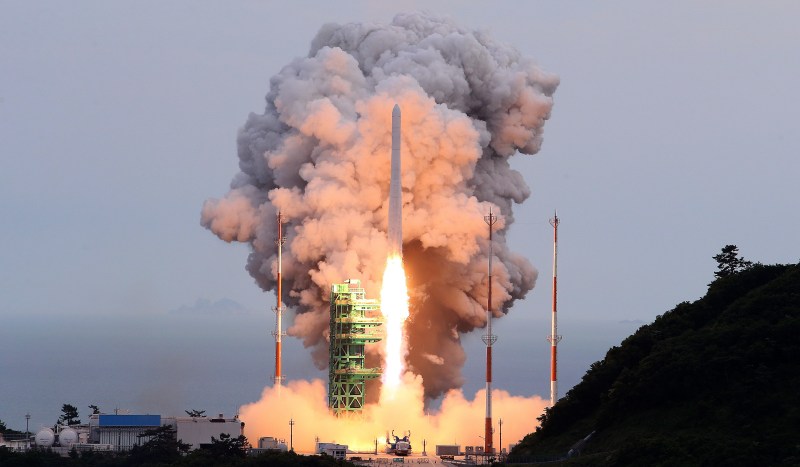South Korea’s KARI ( Korea Aerospace Research Institute ) successfully put a commercial satellite into orbit Thursday, achieving another milestone in their domestic space program. The Nuri rocket (aka KLSV-2) left the Naro Space Center launch pad on the southern coast of the peninsula at 18:24 KST, after a communications glitch in the pad’s helium tank facility caused a one-day slip. The primary payload was the 180 kg refrigerator-sized Earth observation satellite NEXTSat-2. It uses synthetic aperture radar (SAR) and also has instruments to observe neutrons in near-Earth orbit due to the impact of solar activity on cosmic radiation. In addition, seven CubeSats were successfully deployed:
- Justek JLC-101-V1.2, to verify satellite orbital control system
- Lumir, measuring cosmic radiation and testing rad-hardened microprocessor design
- Cairo Space, weather observation and space debris technology demonstration
- KASI-SAT (Korea Astronomy and Space Science Institute) SNIPE, actually four nano-sats which will achieve a 500 km – 600 km polar orbit and fly in formation to measure plasma variations.
It seems that SNIPE-C, Justek, and Lumir are having communication troubles and may be lost. Ground controllers are still searching. This launch comes almost one year after the previous launch of a dummy satellite in June, which we wrote about last year.















“Cairo Space, weather observation and space debris technology demonstration”
Aren’t all cubesats space debris?
B^)
Debris in such an orbit aren’t really of any concern, since the orbit decays in months. Self-cleaning.
The earth is just agglomerated space debris.
We are all star scat.
[Chris Lott], you forgot the KSP tag!
B^)
I relevant Satnogs / LibreSpace thread. https://community.libre.space/t/nuri-rocket-kslv-ii-2023-05-25t09-24-kasi-snipe-cubesats-lumir-t1-jlc-101-v1-2/10475
Thanks. I referred to that thread while writing this, and intended to link it in the article but forgot.
Very cool.